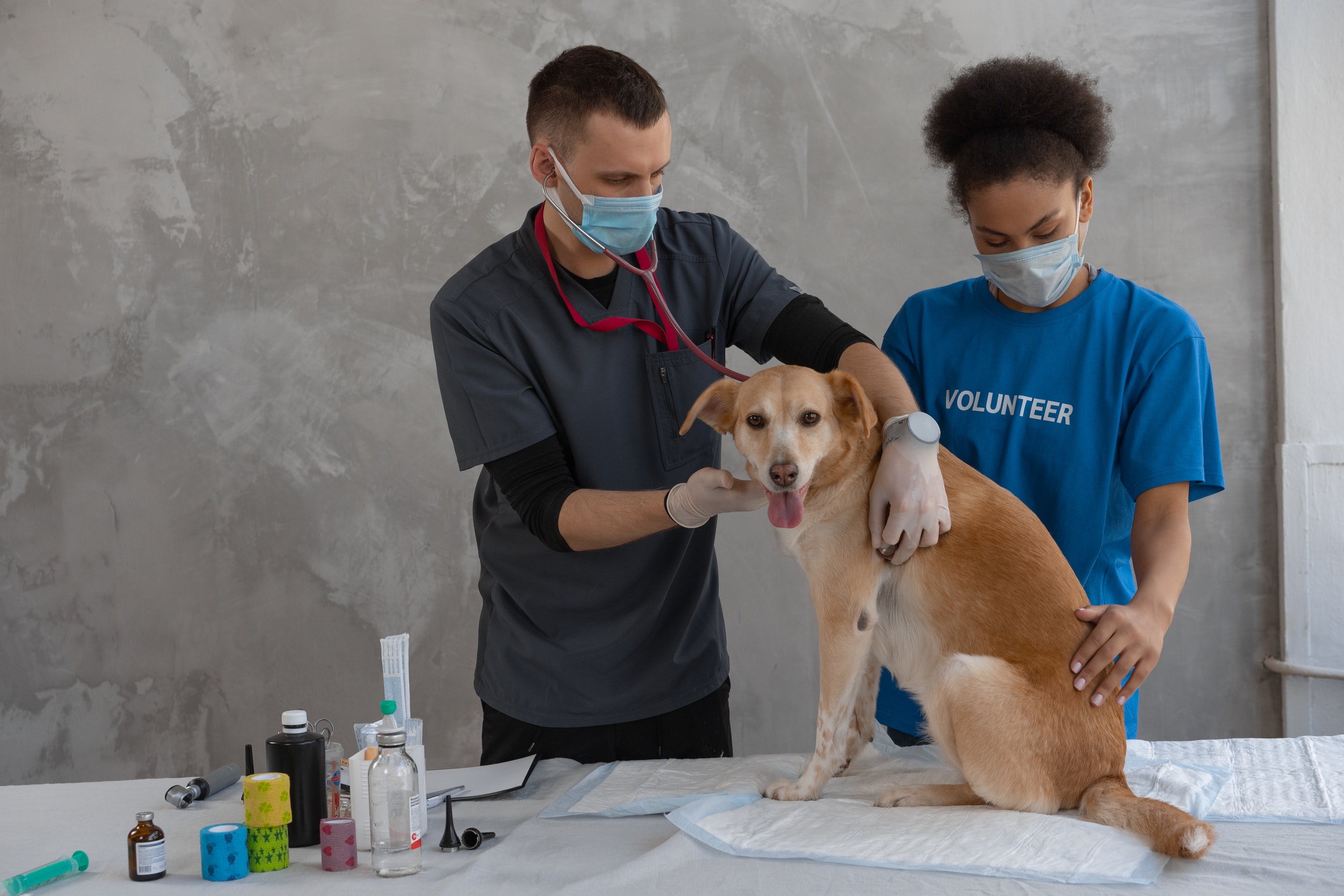Veterinary Assistant Career Exploration and Expansion
Growing up, kids typically go through phases of choosing what career they want to pursue in the future. Think back to childhood. Do you remember pretending to be a supermarket cashier, or a movie director, a chef, a firefighter, maybe a doctor to your stuffed animals or unlucky pets?
We’ve all been there: weighing our options from the sugar-filled perspective of our young minds. Whether it’s from TV, a book, or the internet, kids learn the word veterinarian, or more likely the word vet.
It’s no secret many kids love animals, so it seems fitting when they’re interested in helping animals and getting paid to do it. So, maybe it becomes their whole life dream. Maybe it’s a slower discovery.
Whichever way it might happen, these people go on to prepare and study to make those dreams possible. Fast forward, and these once eager, animal-loving children are ready to enter the workforce.
Potential veterinarians prepare by taking numerous courses in mathematics, physics, chemistry, biology, and other STEM courses as early as high school. If future veterinary workers pursue college education, most major in a branch of science. University science courses are rigorous and demanding, and they only advance as the student progresses through their academic career.
After successfully maintaining roughly a 3.5 GPA or higher throughout college, pre-veterinarians still need to gain clinical experience, take supplementary exams, obtain letters of recommendation, and sit for interviews.
The science-heavy learning paired with all the professional development prerequisites, makes becoming a veterinarian a lengthy, difficult task, yet students still crave an occupation where they can make a difference in animals’ lives. If this sounds like you, consider being a Veterinary Assistant to test the waters of the career field.
A Typical Day
Veterinary Assistants typically care for the animals in a non-evasive way. They help animals exercise, along with cleaning, feeding, medicating, and comforting them.
There are several locations that seek vet assistants: animal clinics, hospitals, offices, even laboratories, so prospective vet assistants have several options with places to seek employment.
There will be tasks that require the vet assistants to aide in the less-appealing parts of the job. Sadly, some animals will not make it, so vet assistants must be prepared to deal with those unpleasant, sad interactions and the clients involved. Additionally, there could be an animal that is ill, scared, or aggressive. Vet assistants are expected to be equipped for those situations as well.
Wherever they work, veterinarians will rely on their assistants to keep the animals, calm, prepped for treatment, and happy. They work together to ensure the animals receive the best care possible.
Hours differ from place to place, with some clinics holding flexible, part-time or full-time hours.
The work environment demands adaptability; from assisting the veterinarian and vet technician with examinations, to facilitating groomings, and managing appointments, the vet assistant’s job is never complete.
Advancements in the Industry
Care for animals has advanced in recent years as technology advances our care possibilities. It’s easier to detect diseases, keep up with hygiene, and maintain health and vitality.
Speaking of maintenance, while our pets may have sharper teeth than we do, their teeth still require a certain level of care.
There is a new possibility that dentistry training might be required in U.S. veterinary schools. Animals’ hygiene is important, and all dog owners know dogs can have very bad breath.
The scope of work that veterinary assistants complete is expanding to meet demands. Soon, they might just be helping animals maintain shiny teeth and fresher breath.
If vet assistants had training in dentistry, they would be able to help vets with this process. Basic tooth removal and routine work can easily be successfully administered by a vet assistant.
This change would begin at the education level. First universities, colleges, career schools, and training schools would implement dentistry units into the curriculum. Then employers and companies would expand the pool of tasks a vet assistant is responsible for daily.
The career shift is an effect of the social, cultural, and economic changes the world is experiencing. Industry trends indicate that the overall pet care market will grow over 6% between 2021 and 2027. Since the pandemic, more people have been adopting animals for both their own benefit and the animals’ benefit. Animals have a new home and dedicated care, while the owners have a new best friend.
Endless Career Possibilities
The expanding and evolving job market will continue to influence the overlap in careers. Students having training in an array of fields allows them to be more marketable and competitive. They can explore various jobs this way too or even craft their ideal position by studying multiple disciplines that interconnect.
The Bureau of Labor Statistics (BLS) estimates that the vet assistant career field will grow roughly 14% from 2020 to 2030. There will be close to 20,000 job listings for veterinary assistants and laboratory animal caretakes each year throughout the country.
If they already offer so much support and care, it only makes sense to diversify their responsibilities to include basic oral procedures.
Oral care is an important aspect of an animal’s overall health. The vet assistant could have the additional responsibility of maintaining tooth and gum health. This would likely increase wage earnings for vet assistants as well. The BLS currently estimates the median pay to be $29,930 annually as of May 2020 for vet assistants.
Vet assistants are not required to post-high school education, but it allows opportunities for other lines of work and better pay. If they hone their dentistry skills and working knowledge of oral care, vet assistants could easily take this responsibility on.
If schools previously offered dentistry as electives, why not expand the career field, and make it mandatory for students to have this working knowledge?
Career Training
The basic knowledge for vet assistants can be accessed through career schools and other training programs.
Blackstone Career Institute’s Veterinary Assistant course covers the behavior, care, and treatment of animals. Students gain a working knowledge of the veterinary assistant field, including veterinary assistant salary information, veterinary anatomy, medical terminology, veterinary office administrative office skills, animal care and handling, office technology, time and stress management, critical thinking skills, and working effectively on a team.
With all these skills, students are prepared to work on an animal care team under the supervision of a veterinarian and veterinarian technician.














